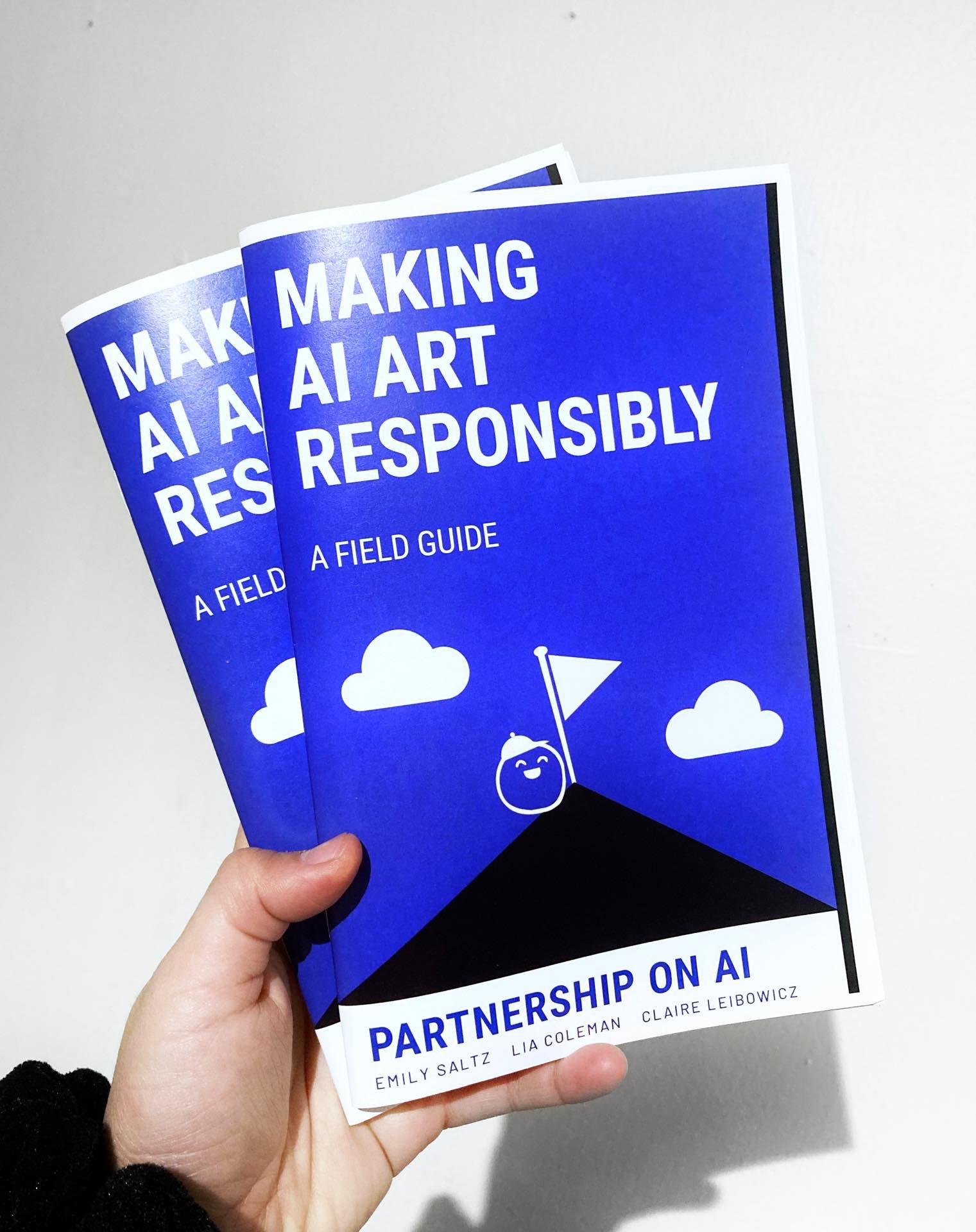THE RESPONSIBLE AI ART FIELD GUIDE
Making AI Art Responsibly: A Field Guide is an illustrated zine composed of questions and case studies to help AI artists use AI techniques responsibly and with care.
I wrote and designed this guide in collaboration with the Partnership on AI.
Here is the original blogpost from the Partnership on AI detailing the creation process.
Publications & Talks
PUBLICATIONS: The Responsible AI Art Field Guide project has been published academically in:
The peer-reviewed journal DISENA. Full citation:
C. Leibowicz, E. Saltz, and L. Coleman, “Creating AI Art Responsibly: A Field Guide for Artists”, Diseña, no. 19, p. Article.5, Sep. 2021. doi: https://doi.org/10.7764/disena.19.Article.5
At the conference Art Machines 2: International Symposium on ML and Art, as an art project abstract. Full citation:
C. Leibowicz, E. Saltz, and L. Coleman, "How Can Artists Use AI Responsibly?," in Art Machines 2: International Symposium on Machine Learning and Art, School of Creative Media, City University of Hong Kong, 2021.
TALKS: With co-authors Emily Saltz and Claire Leibowicz, I have presented the Responsible AI Art Field Guide in talks and workshops at:
City University of Hong Kong, in the conference Art Machines 2: International Symposium on ML and Art
It is also been featured by ARTIFICIA, a Barcelona-based AI art organization, and AltSalt, a community zine platform.
Full Description
Making AI Art Responsibly: A Field Guide is an illustrated zine composed of questions and case studies to help AI artists use AI techniques responsibly and with care.
We suggest that artists using AI should consider themselves part of the broader responsible AI community. As a result, it is important to consider factors such as consent of people represented in your datasets, labor involved in the model development and pre-existing codebase/tools, and AI infrastructure and environmental costs of training machine learning models. We hope that artists will attend to the potentially unintended harmful consequences of work as understood in domains like information security, misinformation, the environment, copyright, and biased and appropriative synthetic media.
With this guide, we believe that by reflecting on what is “responsible” for their own creative works, artists can push forward best practices employed by all AI practitioners. Doing so can ensure that they harness the expressive potential of AI, responsibly.
You can read the full guide here.


